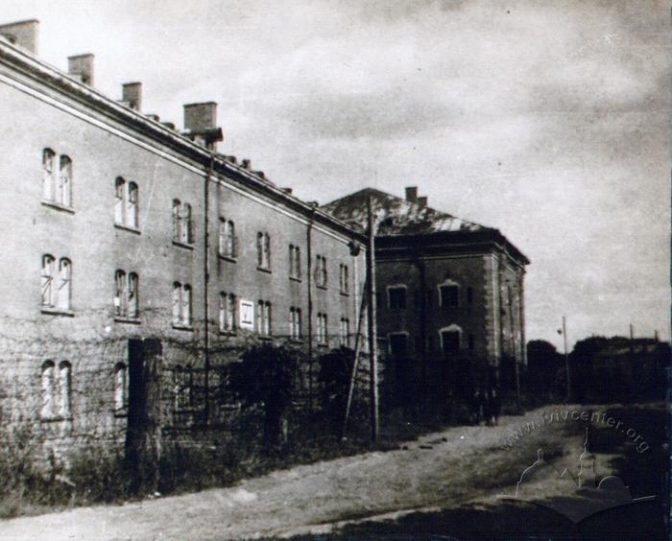Stalag 328 on the Citadel: Topography of Captivity
July - December 2021
More than 5 million Soviet soldiers were taken prisoners by the Germans during World War II. Almost 60% of them did not live to see its end. One of the camps for prisoners of war was located in Lviv. It is the Stalag 328 on the Citadel. Thousands of prisoners died here from starvation, perished from infectious diseases, or were shot. Today, few things remind of those events. The appearance of the Citadel changes very quickly.
In 2021, the Center for Urban History received support from the Office for Tourism at the Lviv City Council to implement the project "Topography of Captivity". It aims to create a digital map of the former camp and a database with the names of the dead prisoners from Ukraine and other countries, as well as a guided tour based on the outcomes.
Citadel is a complex of fortifications erected in Lviv in the middle of the XIX century as a result of the revolutionary events of 1848 to strengthen the control of the Austrian army over the city. At various times, military garrisons of the Habsburg Empire, Ukrainian, Polish and Soviet troops were stationed here. During the Nazi occupation, the Citadel was used as a camp for Soviet prisoners of war.
The story of the barrack №328 at the Citadel in Lviv is part of a broader narrative of National Socialist violence against Soviet prisoners of war during World War II, that killed 3.5 million people. It is also directly related to such historiographical topics as the Holocaust, collaboration and resistance, forced labor, the activities of the UGCC, the policy of remembrance of the war in the Soviet Union and in modern Ukraine. It is also a story about the functioning of the buildings of Stalag 328, the conditions of detention and the subsequent fate of the prisoners, which is an understudied part of the Citadel history.
There is no specialized institution in Ukraine that researches and preserves the memory of Soviet prisoners of war who were victims of National Socialist violence. This theme is only partially represented in the exhibitions of the National Museum of the History of Ukraine in the Second World War and in several other Ukrainian museums. There are only a few examples in the world of comprehensive memorialization of Soviet POW camps, such as the Stalag 326 (VI K) Zenne Memorial in Stuckenbrock, Germany, or the Stalag 342 Memorial Complex in Molodechno, Belarus.
The project aims to draw attention to the historical context of the Citadel as a POW camp; to collect, systematize and provide materials on the history of Stalag 328, which will contribute to the development of tourist routes in the complex, as well as stimulate good public discussion about the Citadel’s past and its future prospects.
The project is implemented by the Center for Urban History with the support of the Office for Tourism at the Lviv City Council, in cooperation with the "After Silence" NGO.
Credits
Cover image: From the collection of the State Archives of Lviv region / Urban Media Archive of the Center for Urban History


